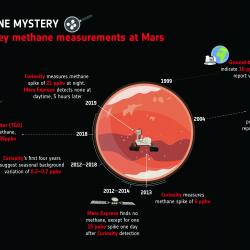Atmosphere services
BIRA-IASB generates high-quality scientific services and products that fulfill needs of the user community, across all its atmospheric research areas. Services such as:
- volcanic emission warnings
- air quality global analysis and prediction
- stratospheric ozone forecasting
- solar UV index analysis and forecasting
- accumulated radiation dose prediction
BIRA-IASB is also strongly involved in WMO/UNEP Scientific Assessments of Ozone Depletion and IPCC Assessment Reports.

We are proud to present a new introductory film, in which the Royal Belgian Institute is being presented in all its facets. Discover the many fields of research and societal challenges in which the Institute is active.
On January 31, King Philippe of Belgium visited the Space Pole and the Institute for Space Aeronomy. Scientists of BIRA-IASB presented him a glimpse of our climate, air quality and ozone layer research.
The Space Pole in Uccle opens its doors to the public on September 24 and 25, 2022.
Volcanic ash and sulphur dioxide emitted by eruptions like the one currently going on with Cumbre Vieja on La Palma, are a threat to human health and aviation. Therefore, SACS warning system monitors these emissions with satellite data, and sends out warning accordingly to stakeholders.
Scientists at the Royal Belgian Institute for Space Aeronomy (BIRA-IASB) have been closely involved in the analysis of the data and the techniques behind it, as well as in the quality control and scientific exploitation of the measurements. Enthusiastic about the results, they want to take this opportunity of “Three years TROPOMI” to provide more information about this satellite mission and to share their most appealing results.
An ICOS synthesis study describing the fingerprint of the 2018 summer drought in Europe trough measurements of CO2.
The TROPOMI satellite instrument has detected decreases in nitrogen dioxide pollution worldwide during the lockdown. In some parts of China, nitrogen dioxide pollution seems to have increased again, rising even slightly higher than previous years.
The largest hole in the ozone layer ever recorded over the North Pole. Unusual meteorological conditions are responsible.
Reality is complex. Here are a few scientific facts about air pollution and air quality. Not all kinds of air pollution will decrease.
The lockdown of various cities in the Chinese province of Hubei has an impact on air quality, clearly perceptible from space.
Space-borne and ground-based instruments can detect such fires from space, as part of the Copernicus Earth Observation programme coordinated by the European Commission.
Dormant since 1924, the Raikoke Volcano in the Kuril Island chain, near the Kamchatka Peninsula in Russia, recently awoke. Copernicus Sentinel-5P and Sentinel-3 satellites are giving vital information.
The Danish ASIM experiment was installed on the outside of the European Columbus module of the ISS.

